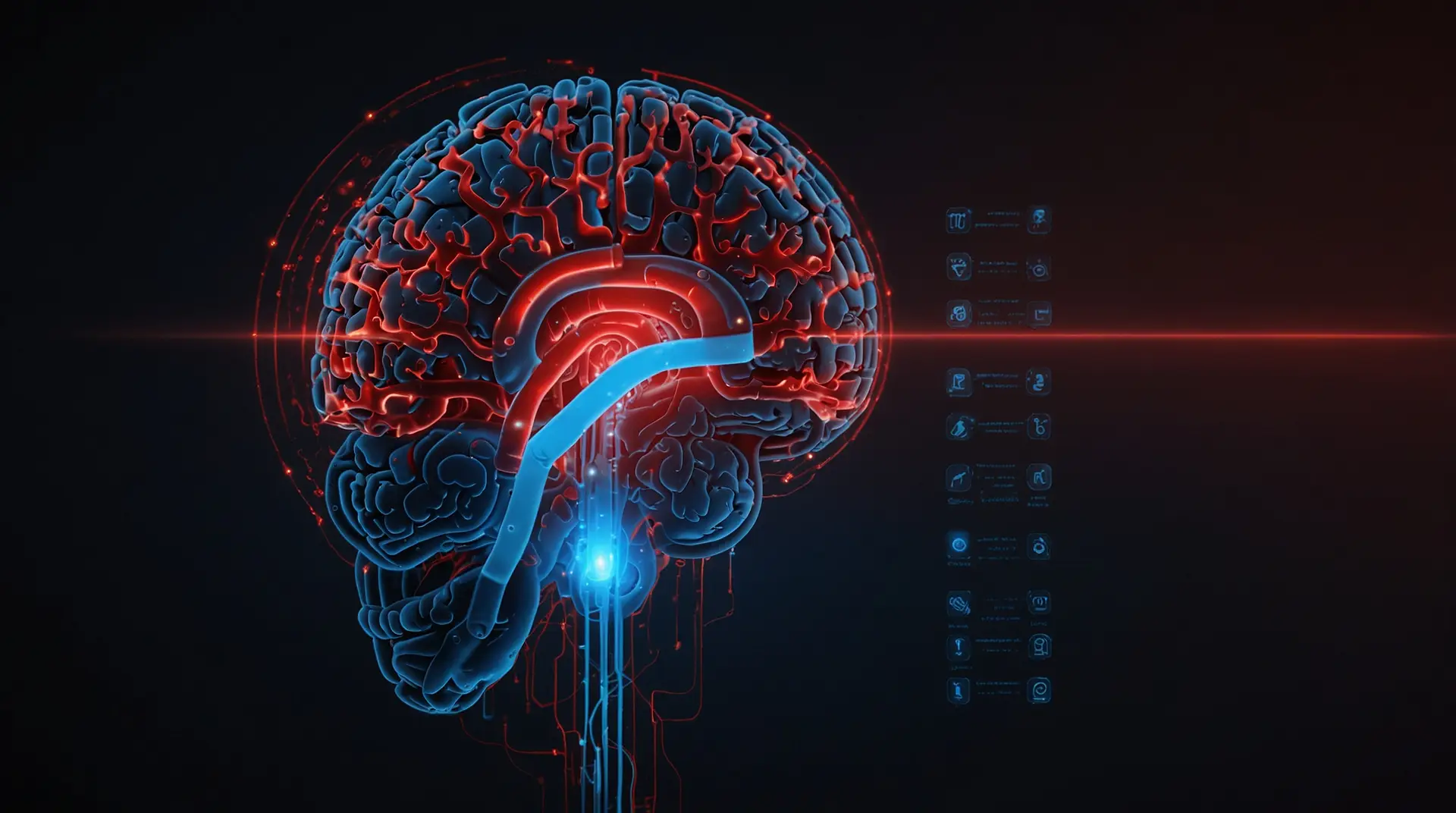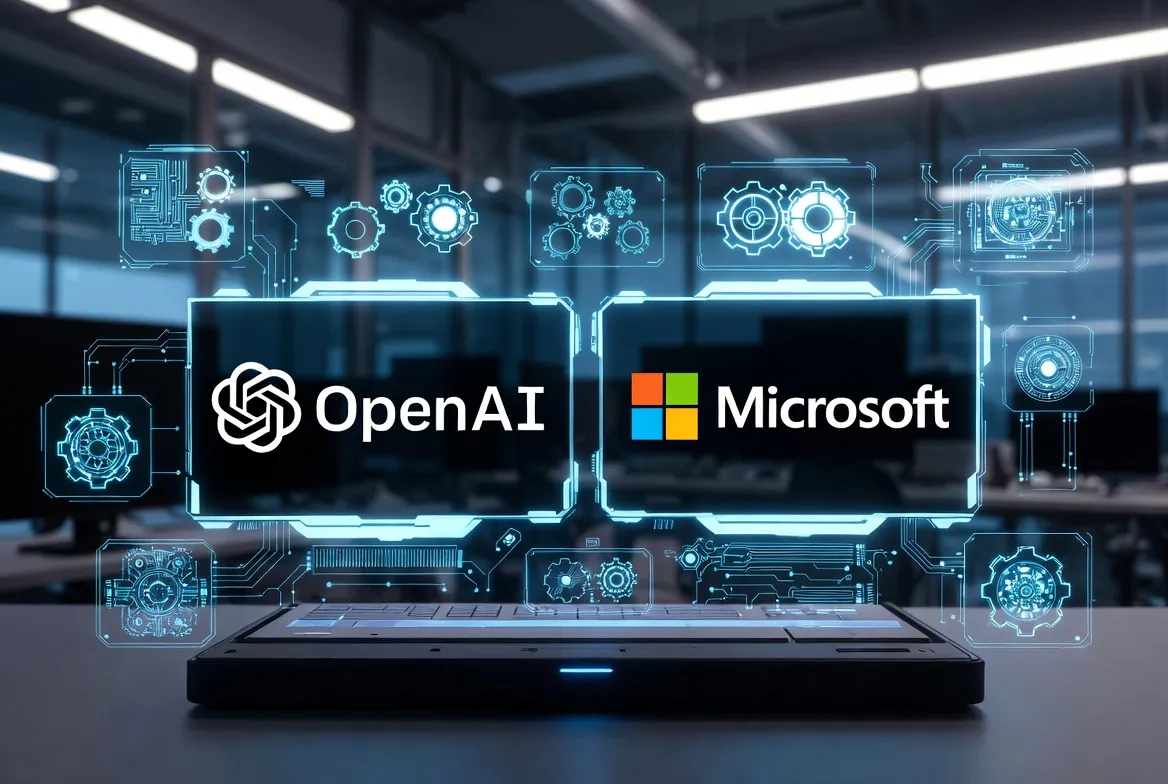Table of Contents
- Table of Contents
- What is Natural Language Processing?
- The Evolution of NLP
- Early Days: Rule-Based Systems (1950s–1980s)
- Statistical NLP (1990s–2000s)
- The Deep Learning Revolution (2010s–Present)
- Core Components of NLP
- 1. Tokenization
- 2. Part-of-Speech (POS) Tagging
- 3. Named Entity Recognition (NER)
- 4. Syntactic Parsing
- 5. Semantic Analysis
- 6. Sentiment Analysis
- 7. Machine Translation
- 8. Text Generation
- 9. Speech Processing
- Current Applications of NLP
- 1. Virtual Assistants and Chatbots
- 2. Search Engines
- 3. Sentiment Analysis and Social Media Monitoring
- 4. Machine Translation
- 5. Content Generation
- 6. Healthcare
- 7. Legal and Compliance
- 8. Education
- Challenges in NLP
- 1. Ambiguity and Context
- 2. Bias and Fairness
- 3. Multilingual and Low-Resource Languages
- 4. Computational Costs
- 5. Privacy and Ethics
- 6. Generalization
- The Future of NLP
- 1. Multimodal NLP
- 2. Smaller, Efficient Models
- 3. Improved Contextual Understanding
- 4. Ethical and Inclusive NLP
- 5. Low-Resource Language Support
- 6. Human-AI Collaboration
- 7. Conversational AI and Emotional Intelligence
- 8. Regulatory and Privacy Frameworks
- 9. Industry-Specific NLP
- 10. Integration with Emerging Technologies
- Practical Steps to Engage with NLP
- Conclusion
Natural Language Processing (NLP) is a transformative field at the intersection of computer science, artificial intelligence (AI), and linguistics, dedicated to enabling computers to understand, interpret, and generate human language in a way that is both meaningful and contextually relevant. From powering virtual assistants like Siri and Alexa to enabling advanced translation systems and sentiment analysis, NLP has become a cornerstone of modern technology. As we stand in 2025, NLP’s capabilities are expanding rapidly, driven by advancements in machine learning, deep learning, and massive computational resources. This article provides a comprehensive exploration of NLP—its foundations, current applications, challenges, and the exciting future that lies ahead—in approximately 2,000 words.
Table of Contents
What is Natural Language Processing?
NLP is a subfield of AI that focuses on the interaction between computers and human language. It encompasses two primary goals: natural language understanding (NLU), which involves interpreting and extracting meaning from text or speech, and natural language generation (NLG), which involves producing human-like text or speech. NLP bridges the gap between human communication—often ambiguous, nuanced, and context-dependent—and the structured, logical world of computers.
The complexity of human language makes NLP a challenging yet fascinating domain. Language is riddled with ambiguities (e.g., “bank” can mean a financial institution or a river’s edge), cultural nuances, idioms, and evolving slang. NLP systems must handle these intricacies while processing vast amounts of unstructured data, such as text from social media, books, or spoken conversations. At its core, NLP combines computational linguistics (rule-based modeling of language) with statistical and machine learning techniques to process and analyze language at scale.

The Evolution of NLP
Early Days: Rule-Based Systems (1950s–1980s)
NLP’s origins trace back to the 1950s with early experiments in machine translation, such as the Georgetown-IBM project, which aimed to translate Russian to English using predefined rules. These rule-based systems relied on handcrafted grammars and dictionaries, making them rigid and limited to specific domains. For example, SHRDLU (1970s), an early NLP system, could understand simple commands in a constrained “blocks world” but struggled with real-world complexity.
Statistical NLP (1990s–2000s)
The 1990s marked a shift toward statistical methods, driven by increased computational power and the availability of large text corpora. Techniques like Hidden Markov Models (HMMs) and n-gram models enabled systems to predict word sequences based on probabilities. IBM’s statistical machine translation systems and early speech recognition tools, like Dragon NaturallySpeaking, showcased the power of data-driven approaches. However, these models still lacked deep contextual understanding and required extensive feature engineering.
The Deep Learning Revolution (2010s–Present)
The advent of deep learning in the 2010s, fueled by neural networks and large datasets, revolutionized NLP. Word embeddings, such as Word2Vec (2013), represented words as dense vectors in a semantic space, capturing relationships like “king” is to “man” as “queen” is to “woman.” Recurrent Neural Networks (RNNs) and Long Short-Term Memory (LSTM) networks improved sequence modeling, enabling better handling of long sentences.
The introduction of the Transformer architecture in 2017, with the seminal paper “Attention is All You Need,” was a game-changer. Transformers, which rely on self-attention mechanisms, process entire sequences simultaneously, capturing long-range dependencies efficiently. Models like BERT (2018), GPT-3 (2020), and their successors leveraged Transformers to achieve unprecedented performance in tasks like question answering, text generation, and sentiment analysis. By 2025, models like Grok 3, built by xAI, exemplify the scale and sophistication of modern NLP, integrating multimodal capabilities and iterative reasoning.
Core Components of NLP
NLP systems rely on a pipeline of tasks, each addressing a specific aspect of language processing. Key components include:

1. Tokenization
Tokenization breaks text into smaller units, such as words or subwords. For example, “I love NLP!” becomes [“I,” “love,” “NLP,” “!”]. Advanced tokenizers, like Byte-Pair Encoding (BPE) used in GPT models, handle rare words and multilingual text efficiently.
2. Part-of-Speech (POS) Tagging
POS tagging assigns grammatical categories (e.g., noun, verb, adjective) to each token. For instance, in “The cat runs,” “cat” is a noun, and “runs” is a verb. This helps in syntactic analysis and disambiguation.
3. Named Entity Recognition (NER)
NER identifies entities like people, organizations, or locations in text. For example, in “Elon Musk founded xAI,” NER tags “Elon Musk” as a person and “xAI” as an organization.
4. Syntactic Parsing
Syntactic parsing analyzes sentence structure, producing a parse tree that shows relationships between words. Dependency parsing, used in tools like spaCy, maps grammatical dependencies (e.g., subject-verb relationships).
5. Semantic Analysis
Semantic analysis extracts meaning, resolving ambiguities and understanding intent. For example, in “I saw a bat,” it determines whether “bat” refers to an animal or a sports tool based on context.
6. Sentiment Analysis
Sentiment analysis classifies text as positive, negative, or neutral. It’s widely used in social media monitoring, e.g., analyzing X posts to gauge public opinion on a product.
7. Machine Translation
Translation systems, like Google Translate, convert text between languages, leveraging parallel corpora and neural models for fluency and accuracy.
8. Text Generation
NLG systems produce human-like text, from chatbot responses to automated news articles. Modern models like GPT-4o and Grok 3 excel at generating coherent, contextually relevant content.
9. Speech Processing
Speech-to-text (automatic speech recognition, ASR) and text-to-speech (TTS) enable voice-based NLP, as seen in virtual assistants. Whisper, by OpenAI, is a leading ASR model in 2025.
Current Applications of NLP
NLP is ubiquitous, powering tools and services across industries. Key applications include:
1. Virtual Assistants and Chatbots
Virtual assistants like Alexa, Siri, and Grok 3 use NLP to understand user queries and provide relevant responses. Chatbots in customer service handle inquiries, reducing human workload.
2. Search Engines
Google and Bing use NLP to interpret queries, rank results, and display rich snippets. BERT’s integration into Google Search (2019) improved query understanding, especially for conversational searches.
3. Sentiment Analysis and Social Media Monitoring
Businesses analyze X posts, reviews, and comments to gauge brand sentiment. Tools like Brandwatch use NLP to track trends and consumer opinions in real time.
4. Machine Translation
Tools like DeepL and Google Translate provide near-human-quality translations, supporting multilingual communication in global markets.
5. Content Generation
NLG tools like Jasper and Copy.ai generate marketing copy, blog posts, and reports, saving time for content creators. Advanced models can mimic specific tones or styles.
6. Healthcare
NLP extracts insights from medical records, assists in diagnosis, and powers chatbots for patient triage. For example, IBM Watson Health analyzes clinical notes to support doctors.
Related Posts
7. Legal and Compliance
NLP automates contract analysis, identifies risks in legal documents, and monitors compliance by extracting key clauses or sentiments.
8. Education
NLP-driven tools like Grammarly and Duolingo enhance writing and language learning, providing personalized feedback and adaptive exercises.
Challenges in NLP
Despite its advancements, NLP faces significant challenges:

1. Ambiguity and Context
Human language is inherently ambiguous. Words like “run” have multiple meanings (e.g., to jog, manage, or malfunction). Contextual understanding, especially for humor, sarcasm, or cultural references, remains difficult.
2. Bias and Fairness
NLP models trained on biased datasets can perpetuate stereotypes or discrimination. For example, early sentiment analysis tools misjudged sentiments in minority dialects. Mitigating bias requires diverse data and ethical oversight.
3. Multilingual and Low-Resource Languages
While NLP excels in high-resource languages like English, low-resource languages (e.g., Swahili, Quechua) lack sufficient training data, limiting model performance.
4. Computational Costs
Training large language models (LLMs) like GPT-4 or Grok 3 requires immense computational resources, raising environmental and accessibility concerns. Inference costs also limit deployment in resource-constrained settings.
5. Privacy and Ethics
NLP systems processing personal data (e.g., emails, health records) raise privacy concerns. Ensuring compliance with regulations like GDPR is critical.
6. Generalization
Models often struggle to generalize across domains or tasks. A model trained on news articles may perform poorly on technical manuals without fine-tuning.
The Future of NLP
As we look toward the future, NLP is poised for transformative growth, driven by technological advancements, societal needs, and ethical considerations. Key trends and predictions for the next decade include:
1. Multimodal NLP
NLP is evolving beyond text to integrate vision, audio, and other data types. Models like CLIP (vision-text) and DALL·E 3 (text-to-image) demonstrate multimodal capabilities. By 2030, expect NLP systems to seamlessly process and generate text, images, and speech, enabling applications like immersive virtual assistants or real-time video captioning.
2. Smaller, Efficient Models
To address computational costs, research is shifting toward smaller, optimized models. Techniques like knowledge distillation, quantization, and sparse attention produce “lite” models with near-SOTA performance. For example, DistilBERT retains 97% of BERT’s accuracy with half the parameters. Edge NLP, running on devices like smartphones, will democratize access.
3. Improved Contextual Understanding
Advances in reasoning and memory-augmented models will enhance contextual understanding. Models like Grok 3’s “think mode” (2025) iteratively refine responses, mimicking human deliberation. Future systems may incorporate external knowledge bases or real-time web data for richer context.
4. Ethical and Inclusive NLP
Efforts to reduce bias and improve fairness are accelerating. Initiatives like Hugging Face’s BigScience project prioritize inclusive datasets and transparent model development. By 2030, expect standardized ethical guidelines for NLP deployment, ensuring fairness across languages and cultures.
5. Low-Resource Language Support
Crowdsourced datasets and transfer learning are improving NLP for low-resource languages. Meta AI’s No Language Left Behind (NLLB) project (2022) supports 200+ languages, a trend that will expand. Community-driven efforts on platforms like X are also contributing to open-source language corpora.
6. Human-AI Collaboration
NLP will shift from automation to augmentation, empowering humans in creative and analytical tasks. Tools like GitHub Copilot (for coding) and Grammarly (for writing) exemplify this trend. Future NLP systems will act as co-creators, offering real-time suggestions for writers, designers, and researchers.
7. Conversational AI and Emotional Intelligence
Next-generation chatbots will exhibit emotional intelligence, detecting user moods and adapting responses. Advances in affective computing and sentiment analysis will enable empathetic AI, useful in mental health support or customer service. Grok 3’s voice mode (2025) hints at this direction.
8. Regulatory and Privacy Frameworks
As NLP adoption grows, governments will enforce stricter regulations. Expect global standards for data privacy, model transparency, and accountability by 2030, balancing innovation with user trust.
9. Industry-Specific NLP
Domain-specific NLP models, fine-tuned for fields like healthcare, finance, or law, will outperform general-purpose models in precision tasks. For example, BioBERT excels in biomedical text analysis, and legal NLP tools streamline contract review.
10. Integration with Emerging Technologies
NLP will converge with technologies like augmented reality (AR), virtual reality (VR), and the metaverse. Imagine AR glasses translating spoken languages in real time or VR assistants narrating immersive stories. Blockchain may also secure NLP data, ensuring trust in sensitive applications.
Practical Steps to Engage with NLP
For those interested in exploring NLP, here are actionable steps:
- Learn the Basics: Study Python, machine learning, and linguistics. Online courses like Stanford’s CS224N (NLP with Deep Learning) or fast.ai are excellent starting points.
- Experiment with Tools: Use libraries like Hugging Face Transformers, spaCy, or NLTK to build NLP projects. Try fine-tuning a BERT model for sentiment analysis.
- Join Communities: Engage with NLP communities on X, Reddit, or GitHub to stay updated on trends and collaborate on open-source projects.
- Stay Ethical: Prioritize fairness and privacy in your NLP work. Explore resources like the AI Ethics guidelines from IEEE.
- Monitor Advances: Follow research from arXiv, conferences like ACL or NeurIPS, and companies like xAI, OpenAI, and DeepMind.
Conclusion
Natural Language Processing has evolved from rigid rule-based systems to sophisticated AI models that understand and generate human language with remarkable accuracy. Its applications—spanning virtual assistants, translation, sentiment analysis, and more—are reshaping industries and daily life. However, challenges like bias, computational costs, and ethical concerns demand ongoing innovation and responsibility. Looking ahead, NLP’s future is bright, with multimodal systems, ethical frameworks, and inclusive models set to redefine human-AI interaction. By 2030, NLP will likely be ubiquitous, seamlessly integrated into devices, workplaces, and creative processes, making communication more accessible and impactful. Whether you’re a developer, researcher, or enthusiast, now is the time to dive into NLP, harnessing its potential to shape a smarter, more connected world.



